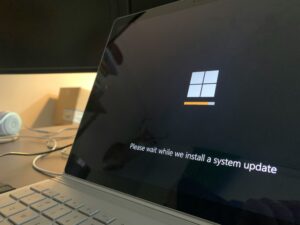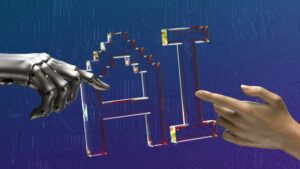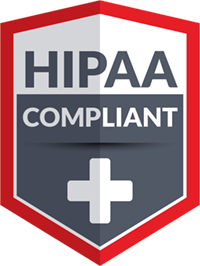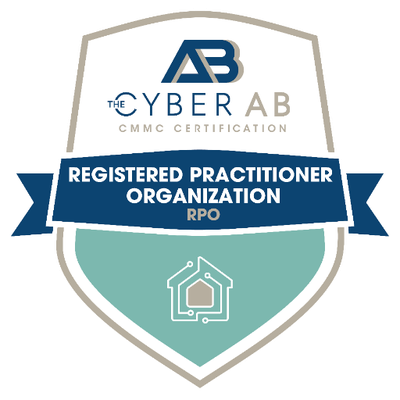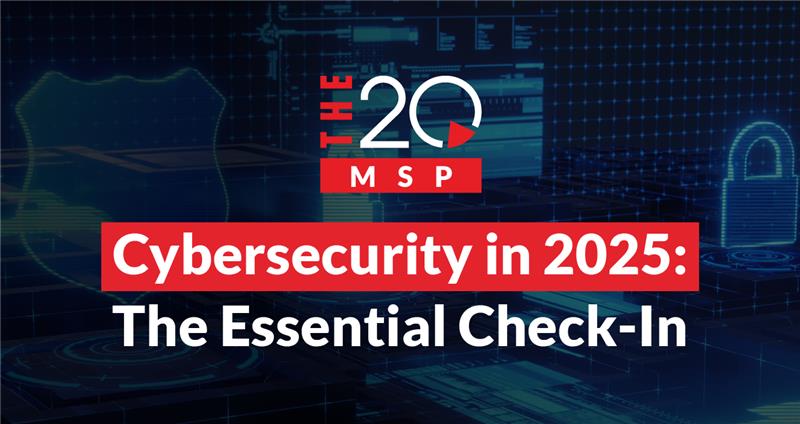
Cybersecurity in 2025: The Essential Check-In
Cybersecurity awareness month may be wrapping up, but for us, there’s never a bad time to talk about cyber awareness. This year we want to step back, look at the big picture, and make sure you’re prepared for the months ahead.
2025 has brought plenty of new tools, trends, threats – especially when it comes to AI. We’re going to talk about all of that, but first let’s revisit the essentials: what’s changed, what’s going to change, and where your business stands – we’ll also be linking to our deeper dives for each topic as we go.
Ready? Let’s get into it.
The Fundamentals
It wouldn’t be a check-in if we didn’t touch base on the foundation of your cybersecurity: passwords, passkeys, software updates, backups, recovery plans, and training.
Passwords
Not much has changed regarding passwords. The basic practices remain critical:
- Create a complex password: Use at least 12-16 characters, combining numbers, letters, capitalization, and special characters.
- Use unique passwords across accounts: According to a Forbes survey, 76% of individuals reuse passwords. Don’t be part of that 76%. If one account gets compromised, every other account using the same password is at risk.
- Regularly update your passwords: About two-thirds of Americans don’t update their passwords regularly. Failing to do so increases the likelihood of compromises through data breaches or brute-force attacks.
- Use a password manager: Complex passwords can be difficult to remember. Password managers simplify the process and can even generate strong passwords for each account.
Read the deep dive here.
Passkeys
Passkeys aren’t new, but they’ve gained serious traction this year. Give it a few more years, and we’re willing to bet that passwords will be phased out. That’s because passkeys are:
- Safer: Passkeys use special cryptographic keys and aren’t stored in databases like passwords, making them far less susceptible to breaches.
- Easier: Passkeys don’t require any memorizing. You just provide your key or pin, and you’re good to go.
Read the deep dive here.
Software Updates
From antivirus software to business software, keeping everything up-to-date is critical. Hackers constantly exploit vulnerabilities, and updates patch them. Not updating your software leaves you exposed.
Read the deep dive here.
Backups and Disaster Recovery
Disasters happen: Floods, cyberattacks, or simple human error can disrupt operations. It’s not about never going offline, but how fast you can get back online. Downtime can now cost upwards of $9,000 per minute, depending on your business’s size.
Preparation is key. And here’s what you need:
A proper backup system. Run daily, scheduled backups to maintain business continuity. That way, if your network goes down, something gets deleted, or data is compromised, you can restore your lost files.
Read the deep dive here.
A clear disaster recovery plan. A recovery plan is your playbook on how exactly your company will react when things go wrong. Document who handles what, main points of contact, and prioritize restoring critical business functions as fast as possible.
Read the deep dive here.
Once your foundation secured and your team is trained, it’s time to look at how new technology is reshaping cybersecurity.
The AI Effect
Now we’re getting to the really interesting stuff. We’ve recently covered some of the ways AI’s been making waves– check out our write-up on agentic AI – but we can’t stress enough how much AI will impact cybersecurity, both good and bad.
AI Defenders
AI is helping protect businesses in ways humans alone can’t. Here’s how:
- Automates threat response: AI can respond to threats that a human technician may miss, either due to late hours or human error. By notifying the proper technicians, AI can improve the reaction speed and minimize the damage of a security incident.
- Monitors suspicious behavior: AI is great at data, and through that data, it can monitor user behavior, flagging users who may have access they shouldn’t, are online at strange hours, or any other suspicious activity that could signify a compromise.
- Strengthens compliance processes: That data can also help companies better demonstrate and comply with regulatory compliance guidelines, making AI the perfect assistance during audits.
AI Attackers
AI security tools aren’t just a luxury, but a necessity, because bad actors are using their own AI tools for rapidly evolving attacks. Some examples of AI threats are:
- Improved malware: Already, we’re seeing malware that can bypass multifactor authentication.
- Faster password cracking: AI-assisted password cracking is threatening the security of unique and complex passwords.
- Advanced phishing tactics: AI is reshaping phishing as we know it, creating chat-based phishing attacks, deepfake phishing, hyper-personalized phishing emails, and much more.
- Low entry bar: AI makes it easier than ever for attackers. Lower costs, ease of use, and widespread access make AI a dangerous prospect for future cybersecurity.
Read the deep dive here.
We’re Staying Ahead of the Curve
The 20 MSP is working vigilantly to stay ahead of developing security risks and trends. More than that, we’re making sure our clients are staying informed along the way. We offer training courses, schedule backups and updates, provide top-tier antivirus software, and keep up with AI advancements.
If you’re looking for a partner to help company stay cyber aware, let’s talk. Cybersecurity is not a one-and-done, and you need a partner who gets that.
Want more tips like this?
Subscribe using the form on the right< and get our latest cybersecurity insights delivered straight to your inbox.
About The 20 MSP
As a leading provider of managed IT services, The 20 MSP serves thousands of businesses nationwide, including single and multi-location organizations, delivering white-glove service, secure and streamlined IT infrastructure, and 24/7/365 support. We believe in building lasting relationships with clients founded on trust, communication, and the delivery of high-value services for a fair and predictable price. Our clients’ success is our success, and we are committed to helping each and every organization we serve leverage technology to secure a competitive advantage and achieve new growth.

